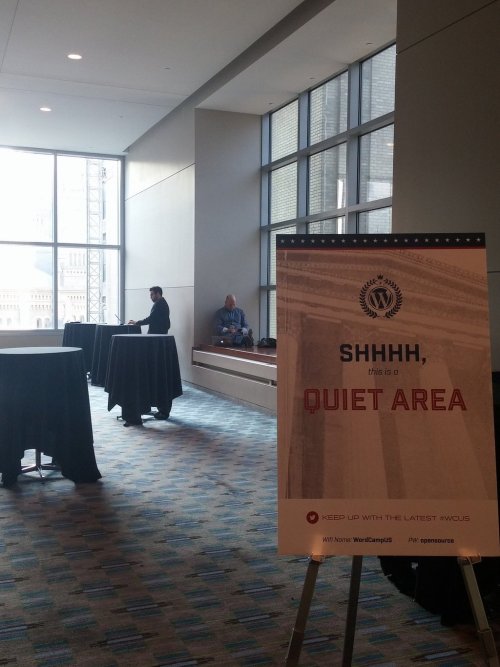I’m standing, and quiet.

I’m standing, and quiet.

I’m standing, and quiet.
Notes from the grab bag of sessions that I attended at WordPress US 2015.
define( 'DISALLOW_FILE_EDIT', true ); – Set this up so no changes can be done outside of git revisions.$$a['b'][$c]:read-:read-only:write:nth-match (not yet supported anywhere):nth-last- (not yet supported anywhere)color() function, native, with no pre-compile step, in the future of CSS. No browsers yet support this.wp cert new in the works.this as the surrounding code....a..wp-core-ui Javascript from core that could be front or back end.wp_head() to hook styles and scripts.aria-live="assertive" to tell screen readers to pay attention to what changes in the js-data window.site/wp-json will list all the routes.&_embed object to get a lot of the extra data and get post by post name.wp scaffold plugin unit-tested-plugin
test_.expect to get get called once with the param, if so, it returns X.equalTo vs identicalTo is the diff of == to ===
aria-level=
role=aria-expanded="true"
#menu-toggle[aria-expanded=true]
aria-controls="menu-main-menu"
aria-label substitutes the text of a button so that it reads something else with assistive techaria-live critical to dynamic content, this is an area of the page that might change.
polite or assertive.wp_remote_*() and wp_safe_remote_*()
wp_safe_remote_*()
wp_remote_retrieve_*()content-security-policy: upgrade-insecure-requestsContent-Security-Policy-Report-Only//url is an antipattern, use https://url instead. Except with iFrames.no_found_rows
update_post_meta_cacheupdate_post_term_cachefieldsposts_per_pagepost__not_in – very slowupdate_option and add_option take a third param, $autoload, set it to false if you won’t need it on every page.esc_htmlesc_attrinnerHTML in JS.March coffee festival in Brooklyn.
One of the more interesting parts of working on PressForward is discovering how many sites actively block the scripts behind Instapaper, Pocket and (of course) PressForward. Some sites take significant measures to do so, one even encrypts the actual text of the document, discouraging readers using Readability-based services by feeding them gobbledygook.
Get it now at http://wordpress.org/plugins/pressforward/ !!!